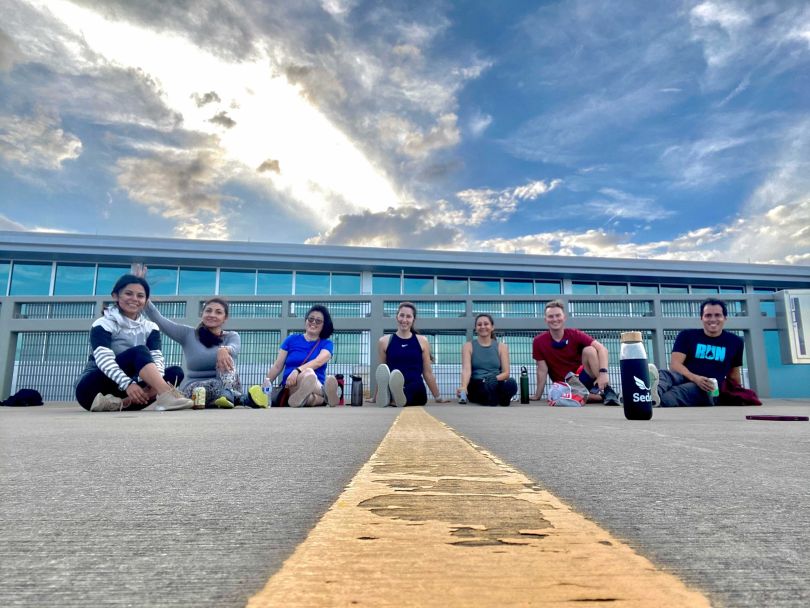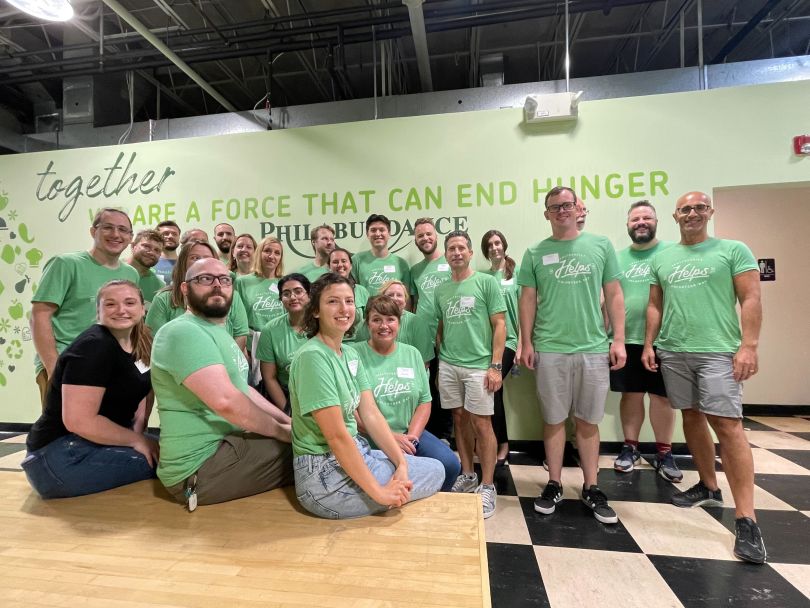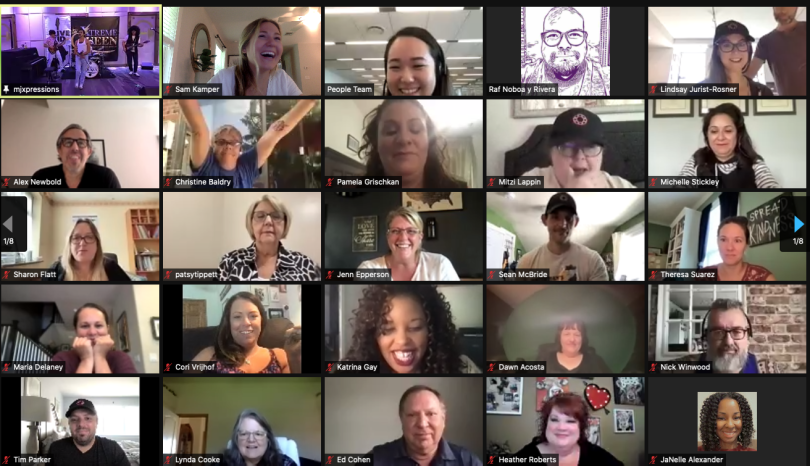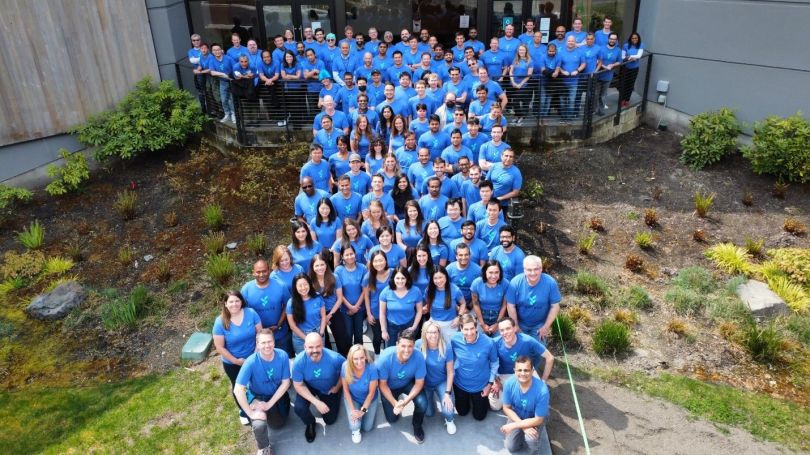Modern medicine has changed how we treat the human body. As robotics and targeted therapies have replaced scalpels and toxic treatments, researchers, physicians and payers have found new ways to deliver and support care.
Yet even as healthcare evolves in new directions, providers and patients alike continue to face challenges that demand novel solutions. The cost of healthcare remains prohibitively high for many, for example, and providers are always looking for ways to reduce the burden on hospitals by helping patients manage their conditions from the comfort of their own home.
How is tech helping to solve some of the challenges that plague healthcare? We asked several companies to share how their tech teams have innovated to make healthcare smarter, more efficient and more equitable than ever before. These companies innovate in unique ways, such as by coming up with new methods of treating cancer, giving patients and caregivers tools to manage addictions, streamlining data collection for researchers and helping diabetes patients navigate their health journey.
Though they target different corners of the healthcare industry, they all have one thing in common: These companies promote wellness and good health through technological innovation.
About the company: Founded in 2014, Virta Health has developed a technology-forward treatment to help diabetes patients manage and improve their condition. Virta’s clinical trial reported a 94 percent reduction in insulin usage among participants in 2018.
Neha Shevade, Head of Engineering, explained how Virta Health is taking on type 2 diabetes:
What problem in healthcare did Virta Health set out to solve?
“Virta’s mission is to reverse type 2 diabetes in 100 million people. Traditionally, diabetes has been seen as a chronic, progressive disease treated with medications. Patients see their doctors three to four times per year and are expected to manage this complex illness – requiring up to 300 decisions each day – on their own. The disease almost always gets worse. With Virta, we aimed to reinvent the diabetes care model through technology solutions to enable unheard-of outcomes, including disease reversal, at scale.”
How did you innovate to solve the problem?
“To make diabetes reversal scaleable, we built a first-of-its-kind, continuous remote care application from the ground up. The application needed to allow providers to remotely treat complex patients, create personalized care plans and make medication adjustments in near real-time, while also following stringent safety and privacy requirements.
“Today, Virta’s continuous remote care model – powered by both machine learning and artificial intelligence – is designed to be effective at managing or reversing multiple chronic metabolic diseases for hundreds of thousands of patients at once, scaling to millions of patients in the future. Here’s how it works:
“First, our clinical team guides patients through sustainable adoption of nutrition therapy and lifestyle changes that are personalized to each individual based on their metabolic health. As these changes take hold, Virta physicians safely de-prescribe medications. Virta patients often interact with our clinical team two to four times per day as they go through the diabetes reversal journey.
“With this high-touch form of telemedicine, key facets of the treatment, from maintaining Virta’s nutritional intervention to de-prescribing medications like insulin, are both safe and effective. Patients develop close relationships with providers and see results – including sustained blood sugar control and clinically-significant weight loss – that incentivize adhering to the treatment long term. Unlike in traditional diabetes care, patients actually get better over time, while reducing dependence on medications.”
In which cities are you currently hiring for tech roles in the U.S.?
“Virta is a ‘remote-first’ organization, so we have multiple fully remote teams and are hiring for qualified teammates across the U.S.! That said, we do have offices in San Francisco and in Denver, where many of our employees are based, and are actively hiring for employees in those regions as well. For Virtans outside of Denver and the San Francisco Bay Area, we offer the opportunity to visit these ‘Hubs’ for in-person connection.”

About the company: RefleXion Medical’s biology-guided technology promises to make radiotherapy more efficient and effective for cancer patients. Its new RefleXion X1 machine has the potential to find and target multiple malignant tumors in patients living with any stage of cancer.
Gopinath Kuduvalli, Ph.D., Vice President of Product Engineering, shared how RefleXion Medical is using technology to improve outcomes for metastatic cancer patients:
What problem in healthcare did RefleXion set out to solve?
“RefleXion Medical is a therapeutic oncology company co-founded in 2009 by Sam Mazin, Ph.D., and Akshay Nanduri to create a new cancer treatment modality through biological guidance designed to one day treat all stages of cancer. Five-year survival for the most common metastatic cancers ranges from 3-30 percent, compared to 39-100 percent for localized cancers, revealing a significant unmet need in treatment options for metastatic cancer patients. There is growing clinical evidence showing improvements in patient survival with conventional radiotherapy to kill cancer cells and shrink tumors if combined with chemotherapy, immunotherapy and targeted therapeutics. However, because conventional radiotherapy is not well-suited to treat patients with multiple tumors, innovation is needed to extend these benefits to the vast majority of patients with any stage of cancer, including stage 4 cancer.”
How did you innovate to solve the problem?
“RefleXion is the first to combine positron emission tomography (PET), the gold-standard method for visualizing cancer of any stage, with external-beam radiotherapy (EBRT) – a demonstrated safe, efficacious and cost-effective method for treating cancer – to create biology-guided radiotherapy (BgRT). Currently under review with the FDA, BgRT will use signals created by the patient’s tumors after injection of a PET radiotracer called FDG to actively guide optimal delivery of the radiation beam in a precise manner. Anchored to a single PET tracer injection, BgRT will be the first and only cancer treatment modality to create a unified process for tracking and ablating a tumor based on unique and dynamic biological guidance. BgRT holds the potential to bring the efficacy and cost-effectiveness of radiotherapy to metastatic disease patients for the first time, which would significantly expand the current radiotherapy market in the United States.
“BgRT is being designed as an additional modality on the RefleXion X1 machine that was granted 510(k) clearance by the FDA in March 2020 for use with conventional image-guided applications, including stereotactic body radiotherapy (SBRT), stereotactic radiosurgery (SRS) and intensity modulated radiotherapy (IMRT) for early-stage and palliative cancer care. If BgRT is given authorization by the FDA, and as we progress from using BgRT for single tumors to one day treating multiple tumors, the X1 machine will be the first and only radiotherapy platform capable of treating all stages of solid tumor cancers.”
In which cities are you currently hiring for tech roles in the U.S.?
“We are currently hiring for tech roles located in Hayward, California, which is centrally located in the greater San Francisco Bay Area. Most tech positions we are hiring for offer a hybrid working schedule, with time split between working in the office and from home.”

About the company: As a non-profit medical cost-sharing organization, Sedera has been building a community of members since its founding in 2014. It aims to offer healthcare options that go beyond the confines of traditional insurance companies.
Alefiya Dhilla, CRO and Product Leader, spoke about Sedera’s mission to reduce the burden of healthcare expenses for patients:
What problem in healthcare did Sedera set out to solve?
“It is no secret that the cost of healthcare has skyrocketed. People are frustrated with the lack of affordability, access and transparency. But where has it been written that insurance is the only way to deal with medical costs? That is where Sedera comes in. Together, we are building a new kind of community – one centered on healthy living and sharing the cost of medical care. Sedera administers a non-profit Medical Cost Sharing community that offers an innovative, non-insurance approach for managing large healthcare costs. Sedera is unique in its drive toward not only disrupting an entire industry but carving out a completely new space in which healthcare consumers thrive.”
How do you innovate to solve the problem?
“The Sedera Medical Cost Sharing model boldly challenges the status quo. Through an innovative layering of healthcare services, we enable individuals and families to access high-quality healthcare that is affordable, flexible and patient-centric. In addition to sharing medical expenses, Sedera provides our members with access to valuable medical shopping concierge, medical bill negotiation, telemedicine, expert second-opinion and personal member advisor services. Sedera models excellence through pioneering a new healthcare option for individuals and families who are ready to take charge of their medical expenses, to create a secure framework that will pave the path for additional market entrants. To this end, we are not only building our brand, but we are creating a dynamic industry that will create best in class expectations for ourselves and our future competitors. We believe our success is ultimately dependent on our member’s experience. Our members benefit from compassionate and clear communication, options for more affordable care, support and encouragement through their most challenging times. Our passion is to be the change that we all want to see: a simple, transparent alternative to the broken and overly-complicated health insurance industry.
In which cities are you currently hiring for tech roles in the U.S.?
“Sedera is a fun and diverse place to work. We are currently hiring for remote tech roles across the U.S.”

About the company: HealthVerity’s IPGE platform collects data from 330 million patients to provide insights and improve outcomes.
John Cappiello, Chief Technology Officer, explained how HealthVerity protects patients’ privacy while collecting data:
What problem in healthcare did HealthVerity set out to solve?
“HealthVerity was founded in 2014 because the healthcare industry needed a more accurate and reliable way to combine disparate datasets (in a HIPAA-compliant manner) to reveal patient insights and power innovation. As we set out to solve these challenges, the vision for what could be accomplished with our comprehensive healthcare and consumer data ecosystem and ever-evolving technologies became something much greater than a solution to data interoperability.”
How did you innovate to solve the problem?
“Today, HealthVerity partners with top pharma, payers and government health agencies to solve some of their most complicated use cases through transformative technologies and real-world data (RWD) infrastructure. The HealthVerity IPGE platform, based on the foundational elements of Identity, Privacy, Governance and Exchange, enables the discovery of RWD across the broadest healthcare and consumer data ecosystem, the building of more comprehensive and accurate patient journeys and the ability to power best-in-class analytics and applications with flexibility and ease.
“HealthVerity’s game-changing patient identity resolution technology activates data isolated in silos across the enterprise through highly sophisticated patient matching and de-identification technology. The proven, industry-leading solution leverages probabilistic matching to unite disparate patient records with a level of accuracy that is 10x better than legacy solutions.
“The technology removes and replaces all protected health information with one-way cryptographic hashed identifiers in compliance with HIPAA. These identifiers allow HealthVerity to accurately create a unique but persistent identifier (HVID) for a patient across multiple data streams with the highest degree of integrity. Overall performance of the HealthVerity patient identity resolution process significantly outperforms traditional methods of deterministic matching. In testing and in real-world use cases, the HealthVerity approach results in approximately 0.2 percent false positive (FP) rates and 2-4 percent false negative (FN) rates, versus 1-3 percent FP and 7-30 percent FN for comparable deterministic methods.
“Throughout the Covid-19 pandemic HealthVerity’s technology was at the forefront of the response accelerating potential Covid-19 interventions through Operation Warp Speed. This public/private partnership with the government and pharma manufacturers facilitated the rapid development, production and distribution of vaccines across the world. Over the last year, HealthVerity has continued to support our vaccine manufacturers and government agencies, such as the CDC and FDA, to facilitate the research and analysis of U.S. Covid-19 patients.”
In which cities are you currently hiring for tech roles in the U.S.?
“We are based in Philadelphia’s Center City, two blocks from Rittenhouse Square. HealthVerity employees in the Philadelphia area can work onsite, in a hybrid or remote capacity. We also hire teammates outside of Philadelphia and are very excited to be developing hubs of remote employees in the following metropolitan areas: New York, Boston, Chicago, Washington, D.C., and Raleigh, North Carolina.”

About the company: New York-based Quit Genius provides employers, insurers and individuals with a virtual community and treatment program to help people reduce their addictions to tobacco, alcohol and opioids.
Ashley Arbgast, People Business Partner, shared how Quit Genius has brought technology into addiction management:
What problem in healthcare did Quit Genius set out to solve?
“Quit Genius is bringing addiction treatment into the 21st century with the first digital clinic for multiple addictions – tobacco, alcohol and opioids. Built on the evidence-based practice of Medication-Assisted Treatment (MAT), Quit Genius combines virtual behavioral therapy with approved medication and remote monitoring devices to help employers tackle the high cost of addiction in the workplace while improving the lives of their employees. To date, Quit Genius has helped more than 750,000 members improve their lives and quit their addictions. Quit Genius is the only such solution with nine peer-reviewed studies, including a randomized controlled trial, demonstrating best-in-class outcomes with quit rates that far exceed those for traditional treatments.”
How did you innovate to solve the problem?
“Quit Genius was founded by three medical doctors after they saw first-hand that the ‘traditional’ model of addiction treatment was broken. In response, the company built the world’s first technology-enabled digital clinic for the modern era. The Quit Genius program replaces ineffective, legacy telephone and in-clinic coaching programs with a virtual clinic that provides members with accessible, equitable and evidence-based addiction care. Substance-use programs are delivered remotely via telehealth and mobile devices and coupled with medication and devices shipped directly to the member. Quit Genius employs counselors across the U.S. who are paired with members to provide one-on-one support as needed.”
In which cities are you currently hiring for tech roles in the U.S.?
“Quit Genius is currently hiring for tech roles on our Data, Information Security and Product teams. While we have offices in London and New York, our primary method of hiring is remote.”

About this company: Current Health, a Best Buy Health company, helps patients manage their health at home through its digital platform that communicates with healthcare providers. First founded in the United Kingdom, Current Health received FDA clearance in 2019. It reports that it has reduced hospital stays by 90 percent and visits to emergency departments by 87 percent.
Mark Kaufman, CTO, spoke on how Current Health is helping patients manage their health from home:
What problem in healthcare did Current Health set out to solve?
“We wanted to help care be delivered at home. With the right technology and service support, a significant portion of healthcare services can be delivered to patients while they remain at home.
“To be clear, this is not an easy problem to solve. Each healthcare organization has unique requirements and workflows, and the variables we encounter within patients' homes are numerous and often unpredictable. But we believe that making care in the home more accessible – and more human – is really important work.”
How did you innovate to solve the problem?
“Collectively, our teams have innovated by gathering a deep understanding of how different healthcare organizations operate, and what kind of technology and support they need to deliver excellent care-at-home experiences. We fill in those gaps, both through our enterprise platform and services. The Current Health platform integrates a variety of connected biometric devices with an engine that makes that data meaningful to healthcare providers and allows them to manage all aspects of the patient experience at home. Our services include door-to-door logistics management and virtual nurses who monitor patients, as well as operational, research and marketing expertise for care-at-home programs.”
In which cities are you currently hiring for tech roles in the U.S.?
“We are a remote-first company. So, while some roles may be specific to the U.S. or the U.K., all of them are remote friendly.”

About the company: Founded in 2015, OM1 developed its data cloud to provide advanced technological tools for researchers and support their quest to find new ways of understanding and treating chronic conditions.
Yaning Zhang, Sr. Software Engineer, shared how OM1 turns data into insight:
What problem in healthcare did your team set out to solve?
"Much of the data within the healthcare space comes in a semi-structured or unstructured format, with loads of information in various types of notes generated during patients' encounters with providers. We wanted to supplement our structured data with this information, as it gives us a fuller picture of a patient's medical history than what we can learn just from the more structured information. It's an unmined treasure trove, a lot of it can be parsed out and labeled into a more structured format. This allows us to unify data out of notes with that from other sources."
How did you innovate to solve the problem?
"We started with looking for relatively simple measures we could extract from within our unstructured data, primarily disease activity scores. Much of the note data report these scores in a somewhat standard format, or with easily-represented semantic groupings, so we built an internal set of tools for recognizing these grammars to pull out this information. From there, we've iterated on our internal tools to be able to explore unstructured data more efficiently and to capture a wider variety of variables, including symptoms and diagnoses. We more recently expanded our toolkit to integrate named-entity recognition (NER) as part of our pipeline to extract patient variables from unstructured text."
In which cities are you currently hiring for tech roles in the U.S.?
"OM1’s office is headquartered in Boston and we also have remote opportunities across the U.S."

About the company: Wellthy provides community and solutions to family caregivers, ultimately helping them navigate the labyrinthine healthcare system.
Kevin Roche, CTO and Co-Founder, spoke about the importance of using technology to help caregivers access the support and tools they need:
What the problem in healthcare did Wellthy set out to solve?
“Fifty-three million Americans are providing unpaid care for their loved ones, with an additional 20 million people becoming new caregivers each year. Despite their ubiquity, family caregivers don’t have the support they need, and as a result, caregiving has become a social determinant of health. Caregivers are increasingly experiencing depression and social isolation, and they are at increased risk of developing conditions like heart disease. This is having a growing impact on the workforce, as about three in four employees face some caregiving responsibilities, and the vast majority of them are taking sick leave and paid leave, or leaving the workforce all together, to care for loved ones.”
How did you innovate to solve the problem?
“Wellthy goes beyond care management to handle the administrative and logistical tasks associated with caregiving. Families have access to a Care Dashboard which acts like a project management tool to keep all planning and resources in one place, and they are connected with dedicated Care Coordinators and specialized Care Advisers who provide active, hands-on support tailored to families’ unique circumstances.
“Wellthy has also created Wellthy Community where families can connect with others who are caring to find support, share experiences and feel less alone in their journey.”
In which cities are you currently hiring for tech roles in the U.S.?
“Wellthy has offices in New York, but is currently hiring for permanently remote positions, open to anyone in the U.S.”

About the company: Since 2020, Truveta has collected data from anonymous medical records and aggregated it to help researchers find answers to medical questions.
Jay Nanduri, CTO, explained how Truveta powers data collection:
What problem in healthcare did Truveta set out to solve?
“Today, clinical health data is often inaccessible, fragmented and unstructured, making it challenging for researchers, clinicians and patients alike. Truveta’s vision is saving lives with data, and we have set out to create the most complete, highest quality U.S. public health data platform. Truveta will deliver valuable insights from billions of clinical data points with a single search and will enable the health community to learn rapidly from each other and from exabytes of de-identified data, all while carefully protecting patient privacy.”
How did you innovate to solve the problem?
“First, we are led and governed by more than 20 major U.S. health systems. Because of their leadership, Truveta data includes over 50 million patient journeys (growing daily) from 700 hospitals and more than 20,000 clinics across the U.S., representing the full diversity of the country across age, geography, race, ethnicity and gender. Using the power of the cloud and advanced technologies like AI, machine learning, and natural language processing, we’ve been able to innovate rapidly at speed and scale to normalize and de-identify billions of data points for clinical research. We have a lot more innovation coming soon – we look forward to sharing!”
In which cities are you currently hiring for tech roles in the U.S.?
“Our headquarters are in the greater Seattle area, but we celebrate and embrace a remote culture.”

About the company: Launched in 2015, Massachusetts-based LightForce harnesses the power of technology to build customizable dental brackets.
Amos Benninga, Vice President of Engineering, described how LightForce is working to improve the orthodontics experience for patients:
What problem in healthcare did LightForce set out to solve?
“The LightForce engineering team goal was to elevate the level of care in orthodontics by enabling orthodontists to provide bespoke, patient-matched treatment, and reduce treatment time. Traditional treatment times usually range from 24-30 months.
“Traditional braces are one size fits all and not customized to the patient’s unique tooth anatomy. This means that the braces do not fit very well and the orthodontist has to make many adjustments to the braces in order to compensate for the lack of fit. This usually results in more appointments and a longer treatment time.”
How did you innovate to solve the problem?
“Through research in 3D printing, materials, algorithms & machine-learning, LightForce is able to offer doctors a CAD-like software platform for digital diagnosis and planning and a fully custom 3D-printed set of braces to match the plan.
“With LightForce’s digital treatment planning software, the orthodontist is able to design the ideal bite and smile for the patient. The CAD software then designs an orthodontic bracket that will fit each tooth perfectly and move it to its intended position, as determined by the doctor who planned the case. It’s important to note that this is only possible with 3D printing. Fully custom brackets cannot be made by conventional manufacturing methods, such as metal injection molding.”
In which cities are you currently hiring for tech roles in the U.S.?
“LightForce is focusing our hiring engineers and product managers in the eastern time zone (remote or local).”











